Hãy nhập câu hỏi của bạn vào đây, nếu là tài khoản VIP, bạn sẽ được ưu tiên trả lời.

a.
\(A=\left(\dfrac{\left(x-1\right)\left(x^2+x+1\right)}{x\left(x-1\right)}+\dfrac{\left(x-2\right)\left(x+2\right)}{x\left(x-2\right)}+\dfrac{x-2}{x}\right):\dfrac{x+1}{x}\)
\(=\left(\dfrac{x^2+x+1}{x}+\dfrac{x+2}{x}+\dfrac{x-2}{x}\right):\dfrac{x+1}{x}\)
\(=\left(\dfrac{x^2+3x+1}{x}\right).\dfrac{x}{x+1}\)
\(=\dfrac{x^2+3x+1}{x+1}\)
2.
\(x^3-4x^3+3x=0\Leftrightarrow x\left(x^2-4x+3\right)=0\)
\(\Leftrightarrow x\left(x-1\right)\left(x-3\right)=0\)
\(\Rightarrow\left[{}\begin{matrix}x=0\left(loại\right)\\x=1\left(loại\right)\\x=3\end{matrix}\right.\)
Với \(x=3\Rightarrow A=\dfrac{3^2+3.3+1}{3+1}=\dfrac{19}{4}\)


Bài 4:
a. Vì $\triangle ABC\sim \triangle A'B'C'$ nên:
$\frac{AB}{A'B'}=\frac{BC}{B'C'}=\frac{AC}{A'C'}(1)$ và $\widehat{ABC}=\widehat{A'B'C'}$
$\frac{DB}{DC}=\frac{D'B'}{D'C}$
$\Rightarrow \frac{BD}{BC}=\frac{D'B'}{B'C'}$
$\Rightarrow \frac{BD}{B'D'}=\frac{BC}{B'C'}(2)$
Từ $(1); (2)\Rightarrow \frac{BD}{B'D'}=\frac{BC}{B'C'}=\frac{AB}{A'B'}$
Xét tam giác $ABD$ và $A'B'D'$ có:
$\widehat{ABD}=\widehat{ABC}=\widehat{A'B'C'}=\widehat{A'B'D'}$
$\frac{AB}{A'B'}=\frac{BD}{B'D'}$
$\Rightarrow \triangle ABD\sim \triangle A'B'D'$ (c.g.c)
b.
Từ tam giác đồng dạng phần a và (1) suy ra:
$\frac{AD}{A'D'}=\frac{AB}{A'B'}=\frac{BC}{B'C'}$
$\Rightarrow AD.B'C'=BC.A'D'$


Bài 38:
Xét ΔABD và ΔACB có
\(\frac{AB}{AC}=\frac{AD}{AB}\left(\frac{10}{20}=\frac{5}{10}=\frac12\right)\)
góc BAD chung
Do đó: ΔABD~ΔACB
=>\(\hat{ABD}=\hat{ACB}\)
Bài 36:
Xét ΔABD và ΔBDC có
\(\frac{AB}{BD}=\frac{BD}{DC}\left(\frac48=\frac{8}{16}=\frac12\right)\)
\(\hat{ABD}=\hat{BDC}\) (hai góc so le trong, AB//CD)
Do đó: ΔABD~ΔBDC
=>\(\hat{BAD}=\hat{DBC}\)
ΔABD~ΔBDC
=>\(\frac{AD}{BC}=\frac{AB}{BD}=\frac48=\frac12\)
=>BC=2AD
35:
Xét ΔAMN và ΔACB có
\(\frac{AM}{AC}=\frac{AN}{AB}\left(\frac{10}{15}=\frac{8}{12}=\frac23\right)\)
góc MAN chung
Do đó: ΔAMN~ΔACB
=>\(\frac{MN}{CB}=\frac{AM}{AC}=\frac23\)
=>\(MN=18\cdot\frac23=12\left(\operatorname{cm}\right)\)

ĐKXĐ: \(\left|x-2\right|-1\ne0\)
\(\Rightarrow\left|x-2\right|\ne1\)
\(\Rightarrow\left\{{}\begin{matrix}x-2\ne1\\x-2\ne-1\end{matrix}\right.\)
\(\Rightarrow\left\{{}\begin{matrix}x\ne3\\x\ne1\end{matrix}\right.\)
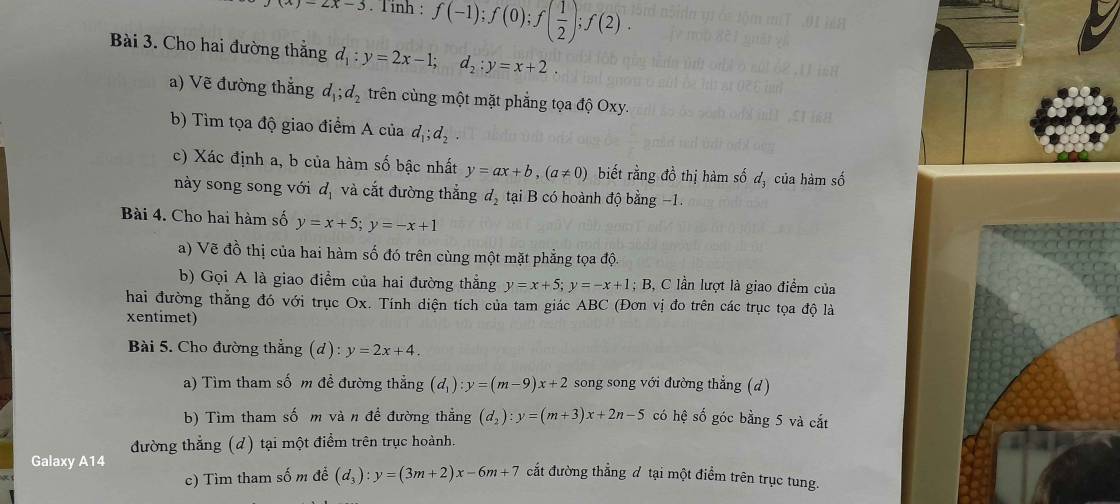

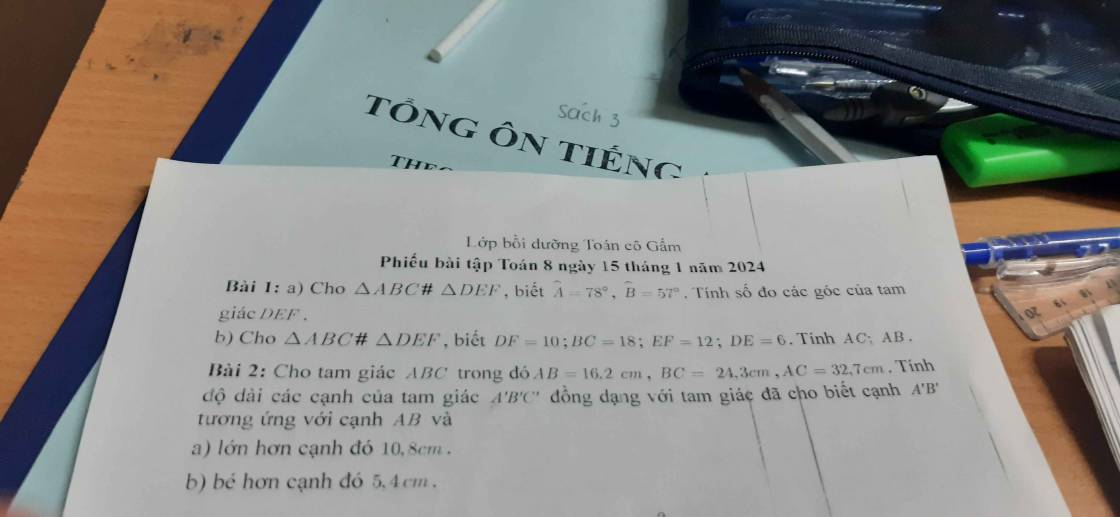


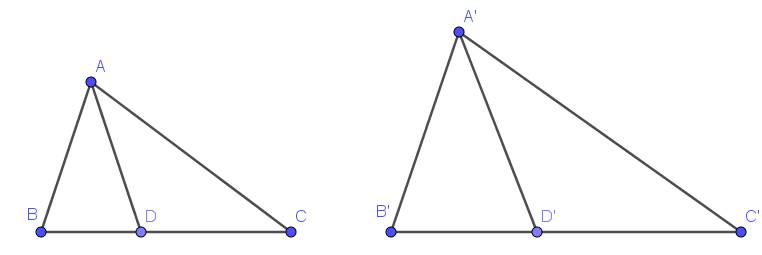
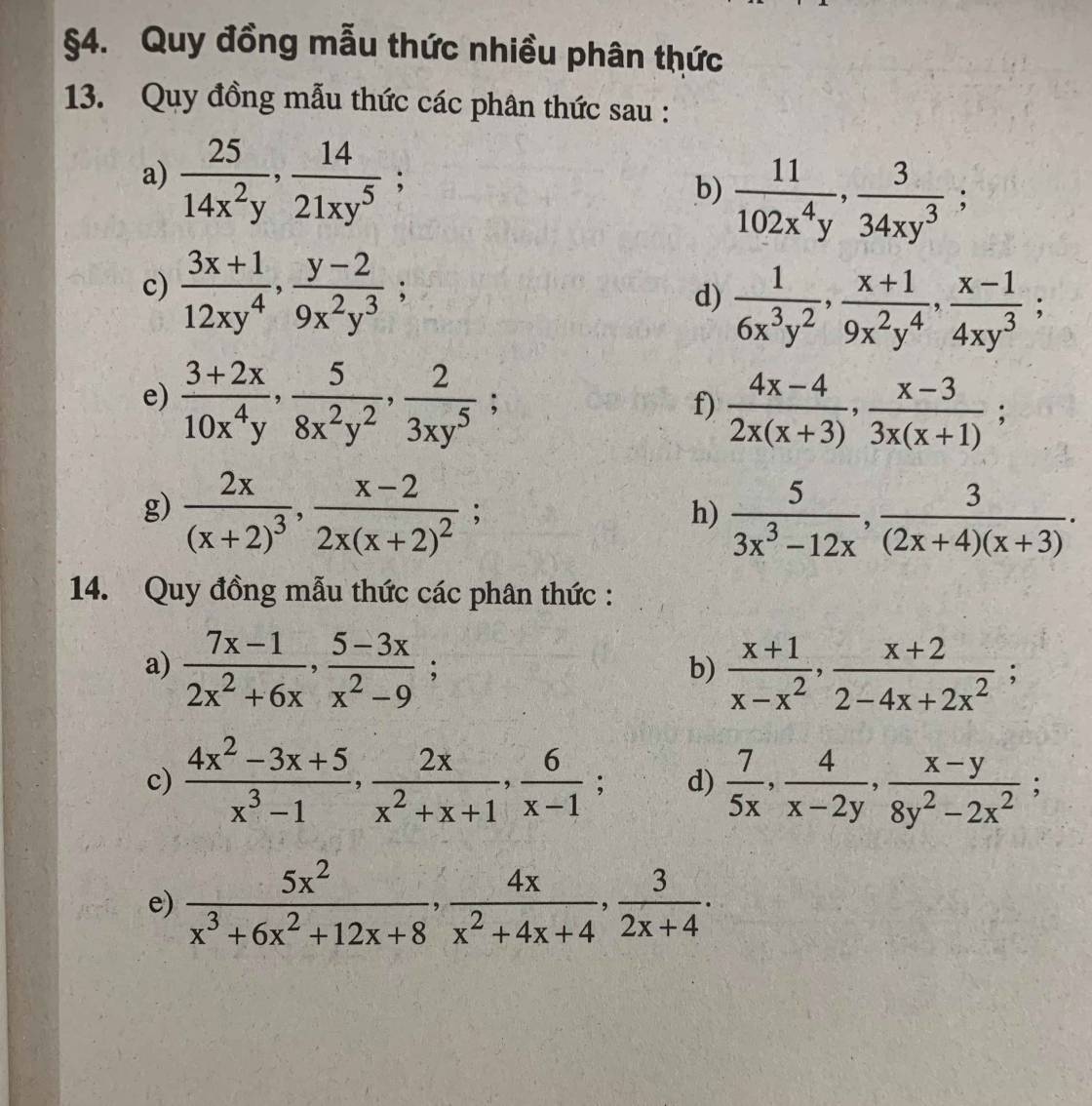
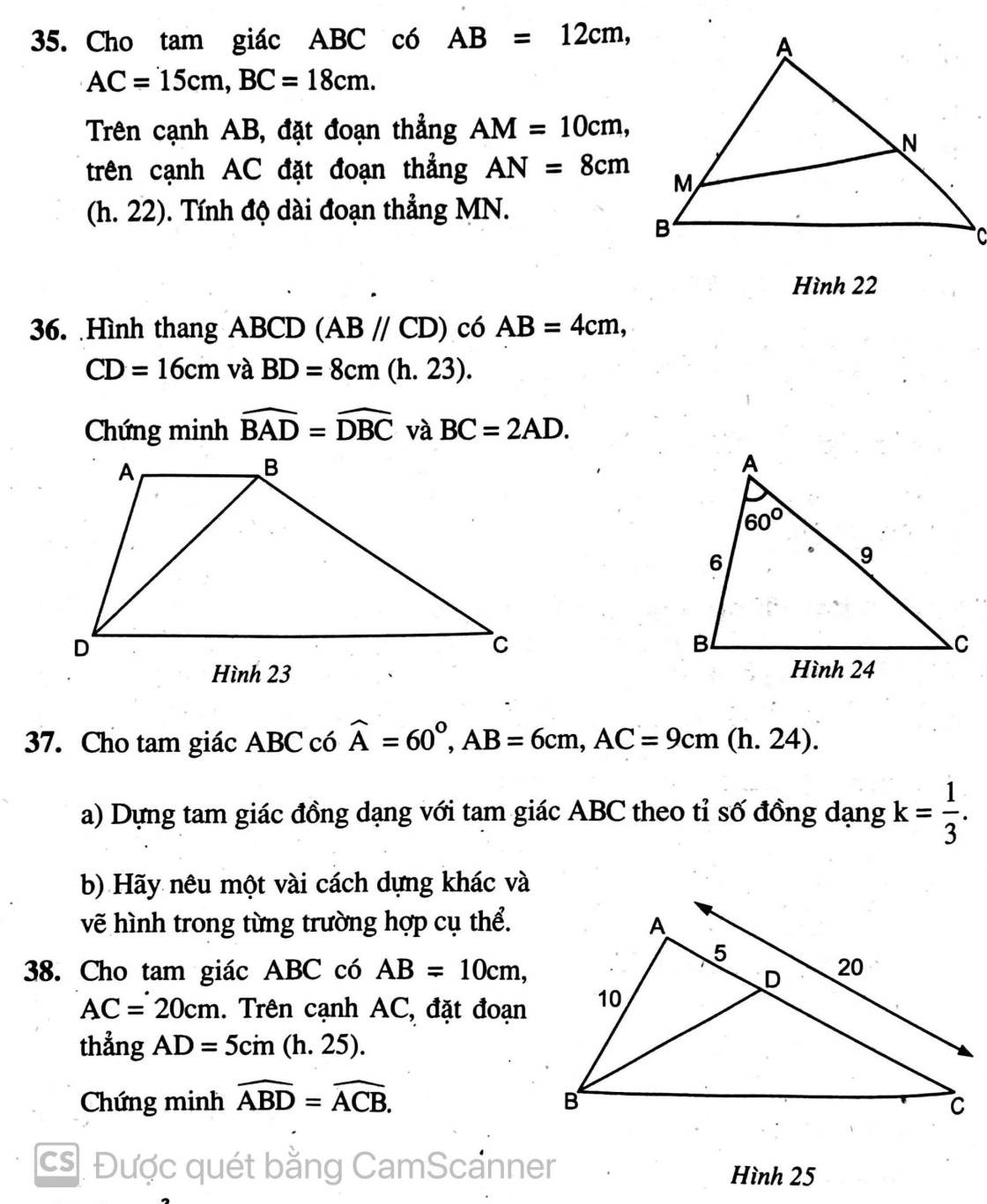
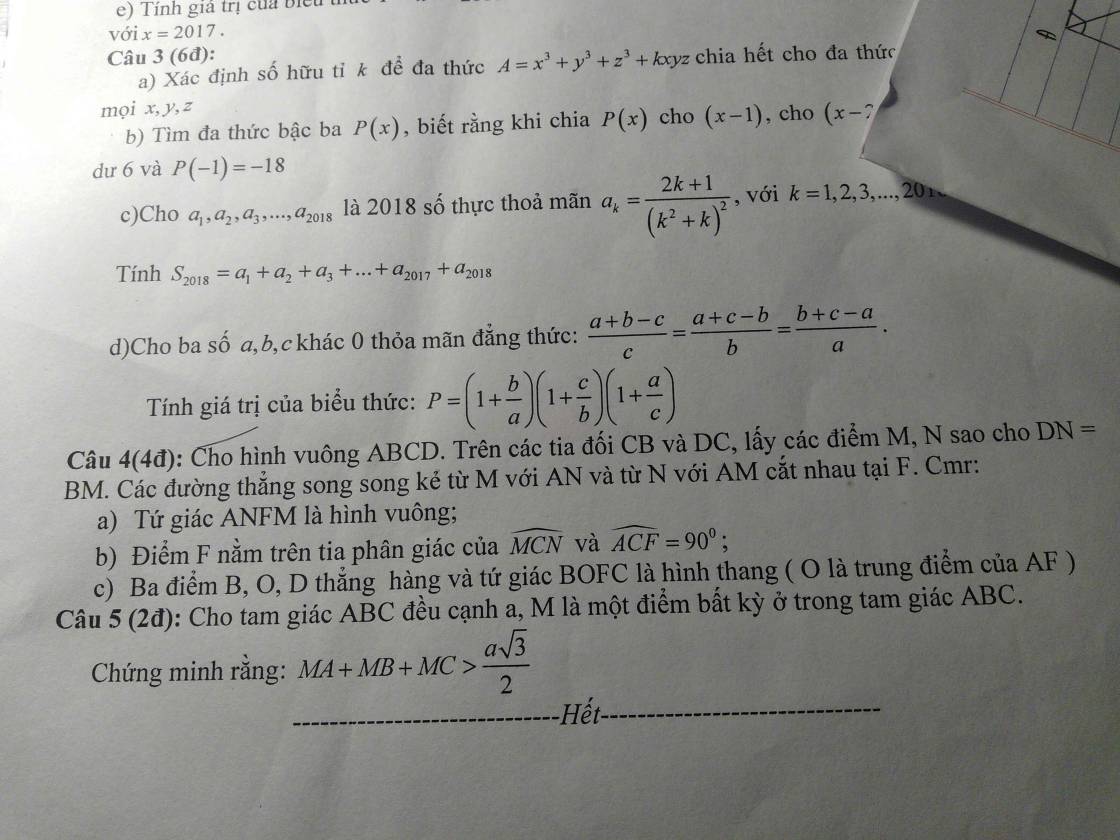

Bài 5:
a: Để (d)//(d1) thì \(\left\{{}\begin{matrix}m-9=2\\2\ne4\left(đúng\right)\end{matrix}\right.\)
=>m-9=2
=>m=11
b: (d3) có hệ số góc bằng 5 thì m+3=5
=>m=2
=>(d3): y=5x+2n-5
Để (d3) cắt (d) tại một điểm nằm trên trục hoành thì:
\(\left\{{}\begin{matrix}5\ne2\\\dfrac{-2n+5}{5}=\dfrac{-4}{2}=-2\end{matrix}\right.\)
=>\(-2n+5=-10\)
=>-2n=-15
=>\(n=7,5\)
c: Để (d) cắt (d3) tại một điểm trên trục tung thì:
\(\left\{{}\begin{matrix}3m+2\ne2\\4=-6m+7\end{matrix}\right.\)
=>\(\left\{{}\begin{matrix}m\ne0\\m=\dfrac{1}{2}\end{matrix}\right.\)
=>m=1/2
Bài 4:
a: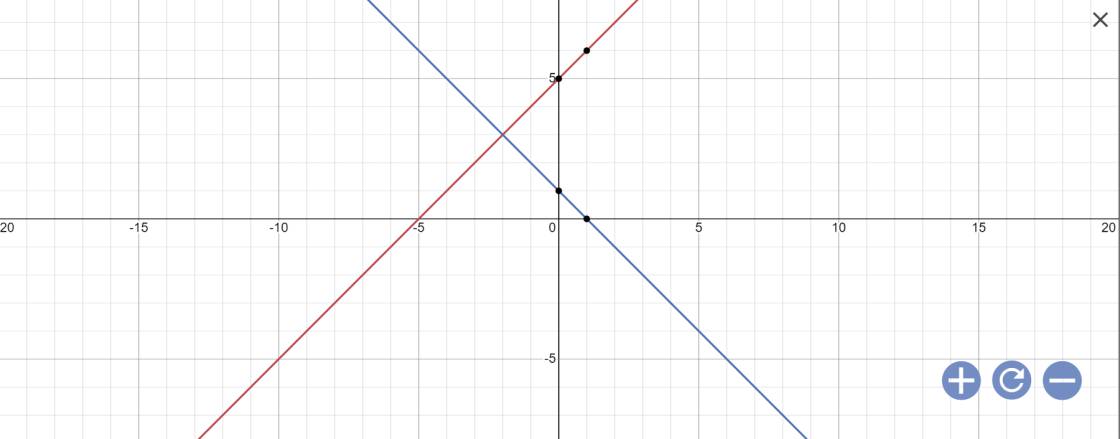
b: Tọa độ A là:
\(\left\{{}\begin{matrix}x+5=-x+1\\y=x+5\end{matrix}\right.\)
=>\(\left\{{}\begin{matrix}2x=-4\\y=x+5\end{matrix}\right.\)
=>\(\left\{{}\begin{matrix}x=-2\\y=-2+5=3\end{matrix}\right.\)
Vậy: A(-2;3)
Tọa độ B là:
\(\left\{{}\begin{matrix}y=0\\x+5=0\end{matrix}\right.\)
=>\(\left\{{}\begin{matrix}x=-5\\y=0\end{matrix}\right.\)
Vậy: B(-5;0)
Tọa độ C là:
\(\left\{{}\begin{matrix}y=0\\-x+1=0\end{matrix}\right.\)
=>\(\left\{{}\begin{matrix}x=1\\y=0\end{matrix}\right.\)
=>C(1;0)
A(-2;3); B(-5;0); C(1;0)
\(AB=\sqrt{\left(-5+2\right)^2+\left(0-3\right)^2}=3\sqrt{2}\)
\(AC=\sqrt{\left(1+2\right)^2+\left(0-3\right)^2}=3\sqrt{2}\)
\(BC=\sqrt{\left(1+5\right)^2+\left(0-0\right)^2}=6\)
Vì \(AB^2+AC^2=BC^2\)
nên ΔABC vuông tại A
=>\(S_{ABC}=\dfrac{1}{2}\cdot AB\cdot AC=\dfrac{1}{2}\cdot3\sqrt{2}\cdot3\sqrt{2}=9\)